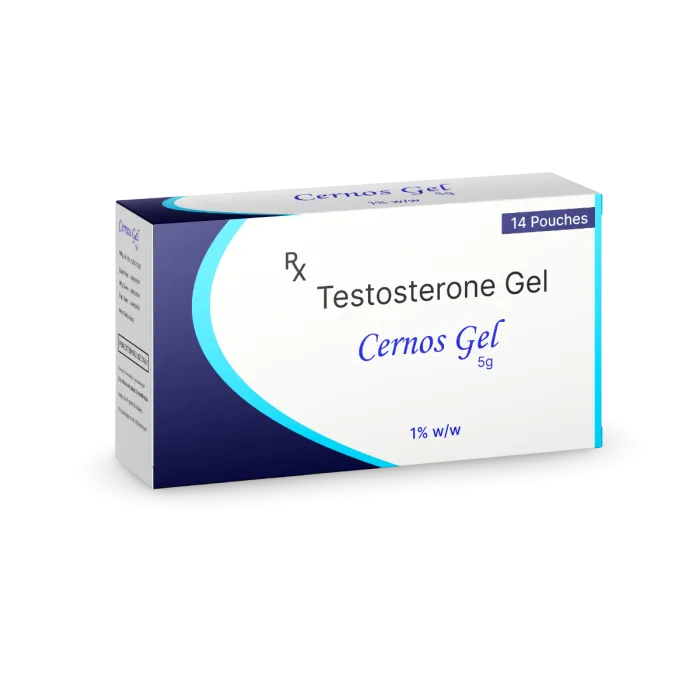Testosterone is known as the male sex hormone and helps develop masculine traits in men or Assigned Males at Birth (AMAB).
A person may experience low Testosterone levels, affecting bodily functions and overall well-being.
However, some people experience low Testosterone face due to low Testosterone levels.
People with such facial shape may often notice the lack of masculine traits in their facial features.
The most common question is how low Testosterone and appearance are connected.
This article will discuss how low Testosterone affects facial features and how one can treat it.
Understanding Low Testosterone Face
Testosterone is the most essential male sex hormone and helps maintain energy levels, libido, and bone density. However, low Testosterone levels can cause low libido in men, loss of body hair, loss of body muscles, and Osteoporosis.
Low Testosterone also affects one’s facial features and is known as a low Testosterone face.
According to a study Testosterone levels affect the face width and lower face length.
Individuals with higher Testosterone levels often have prominent cheekbones, wider jaw, and longer chin. However, low Testosterone levels often reverse these masculine visuals and lessen the prominence of the cheekbones.
The jawline becomes less prominent, and the lower face length usually decreases, which makes one’s facial features softer.
Since low Testosterone reduces facial hair, one may also have problems growing a beard. All these effects of low Testosterone in men can create completely different facial features.
If you are experiencing a blow to your confidence due to low Testosterone face, it might be time to try our Cernos Gel or Cernos Capsules. They are very effective for boosting Testosterone levels and helping make your facial features prominent.
Save up to 90% on your medicine bills

Cernos Gel 1%w/w

Cernos 40 Mg Soft Gelatin Capsule

Sustanon 250 Injection

Carmel Organics Ashwagandha Extract Tablets
Factors Causing Low Testosterone Face
The factors which cause male face with low Testosterone are usually the ones that result in low Testosterone.
These factors often include age, psychological factors, and other medical conditions.
A study states that men start to experience a drop in their Testosterone levels after 30. Thus, with aging, individuals may observe the effects of low Testosterone on their facial features.
Psychological factors like Anxiety and stress can also cause low Testosterone, resulting in such a face shape. Some individuals may experience low Testosterone face shape due to medical conditions.
These medical conditions include Diabetes, cancer, and Hypothyroidism (low thyroid).
Treatment of Low Testosterone Face
People can opt for several treatments for low Testosterone, which can help them restore their hormonal balance.
Doctors popularly suggest Testosterone pills since they are easier to use and more effective. Performing aerobic exercises daily may also help boost Testosterone levels and treat low Testosterone face.
People experiencing low Testosterone due to psychological factors may choose therapy. Stress management exercises and practicing yoga may also help deal with this male face.
In some cases, doctors may also prescribe Testosterone-Replacement Therapy (TRT) for faster results.
TRT is a treatment option to supplement Testosterone levels and helps maintain its normal balance.
Conclusion
Low Testosterone face refers to the less masculine facial features one may experience due to the low hormone level.
Its characteristics include less prominent cheekbones and jaws, shorter chin length, and lesser beard growth.
Individuals with such a face often may experience it due to several lifestyle, psychological, and medical factors.
However, there are several available treatments for the condition, and can help boost one’s confidence.
Doctors often prescribe Testosterone Replacement Therapy, aerobic exercises, yoga, and Testosterone pills.
It is always suggested to consult your doctor to learn the underlying factors before using these treatments.

Frequently Asked Questions
Does low Testosterone change your face?
Yes, Testosterone can change your face. High Testosterone levels define masculine features like prominent jaws and a longer chin. However, individuals with low Testosterone levels often have low Testosterone faces. It consists of characteristics like less defined cheekbones and jawline and makes the facial structure softer.
What are the signs of a male face with low Testosterone?
There are several signs of a male face with low Testosterone. A person with low Testosterone may notice a decrease in the length of their lower face. They may also notice less beard growth and less prominent jawline and cheekbones, giving their face a softer look. Explore Testosterone Solutions
At what age does a person experience facial changes due to low Testosterone?
A person may experience facial changes due to low Testosterone during adolescence and early adulthood. Testosterone levels start to decline at thirty when an individual can notice a low Testosterone face. It often redefines their jaws, cheekbones, and facial features.
Is a male face with low Testosterone reversible?
Yes, a male face with low Testosterone is reversible in most individuals. Since it is caused due to low Testosterone levels, boosting hormone production often helps. One can reverse a male face with low Testosterone using Testosterone pills, therapy, hormonal therapy, and performing aerobic exercises.
Can women experience a low Testosterone face?
No, women may not experience a low Testosterone face. Although the levels of Testosterone production are quite low in females, high Testosterone levels as compared to their body production may give their face a more masculine feature. However, there may be no effects of low Testosterone on their face.
Cheap Medicine Shop only refers to credible, authoritative sources for our content. If you’re curious about how we ensure the integrity of our content, we encourage you to read our Content Information Policy.














